New York-based Korean illustrator Eunsan Huh shares her journey from living in the diaspora to spreading Korean culture
2024-02-04Eunsan Huh says she is passionate about Korean culture, and her goal is to share all that she knows and learn about it through illustrations and insightful content.
In this interview, the multifaceted creative talks about her roots and the motivations behind her multiple projects, offering a deep look into her cultural identity.
The interview took place between January 22nd and February 1st through email communications.
1. Your story is quite interesting since you have lived in different countries. Can you share with our readers Who is Eunsan Huh?
Hi! My name is Eunsan and I’m an illustrator based in New York City. I was born in Seoul, Korea. When I was 6 my family moved to Newcastle, Australia for 3 years — that’s where I learned English, and then to Vancouver, Canada, when I was 10 (where I was told I had an Australian accent! Sadly, I’ve lost it since).
I moved to New York for university because I thought I wanted to work in fashion, but after interning at various magazines and fashion houses I realized that wasn’t the path for me. Instead, I found a different creative avenue. This summer will mark this ajumma’s 17th year in the city!
Eunsan Huh wearing a Seoul 88 Olympics hoodie with Hodori in the back.
2. How did the projects “Every Single Word in Icelandic” and “My Korean Childhood” come about?
I’ve been drawing since I was a child and have always considered myself a creative person. But I realized that I also need boundaries and guidelines to thrive and be consistent (this is also why I enjoy having a 9-5 day job). I figured out that by having some rules like drawing a language, drawing in a specific style, etc, I could avoid the fear of the blank page and not knowing what to make. The theme and style became a grounding point to generate new ideas and keep myself creating consistently.
After studying and drawing Icelandic for some while, I realized I had spent all this time and effort learning about someone else’s culture while I had abandoned my own. At the same time, I had been drawing line icons with a limited colour palette for so long, I wanted to branch out and have more creative freedom. The style of My Korean Childhood illustrations are much closer to my usual drawing style, and I have a lot more freedom with these illustrations.
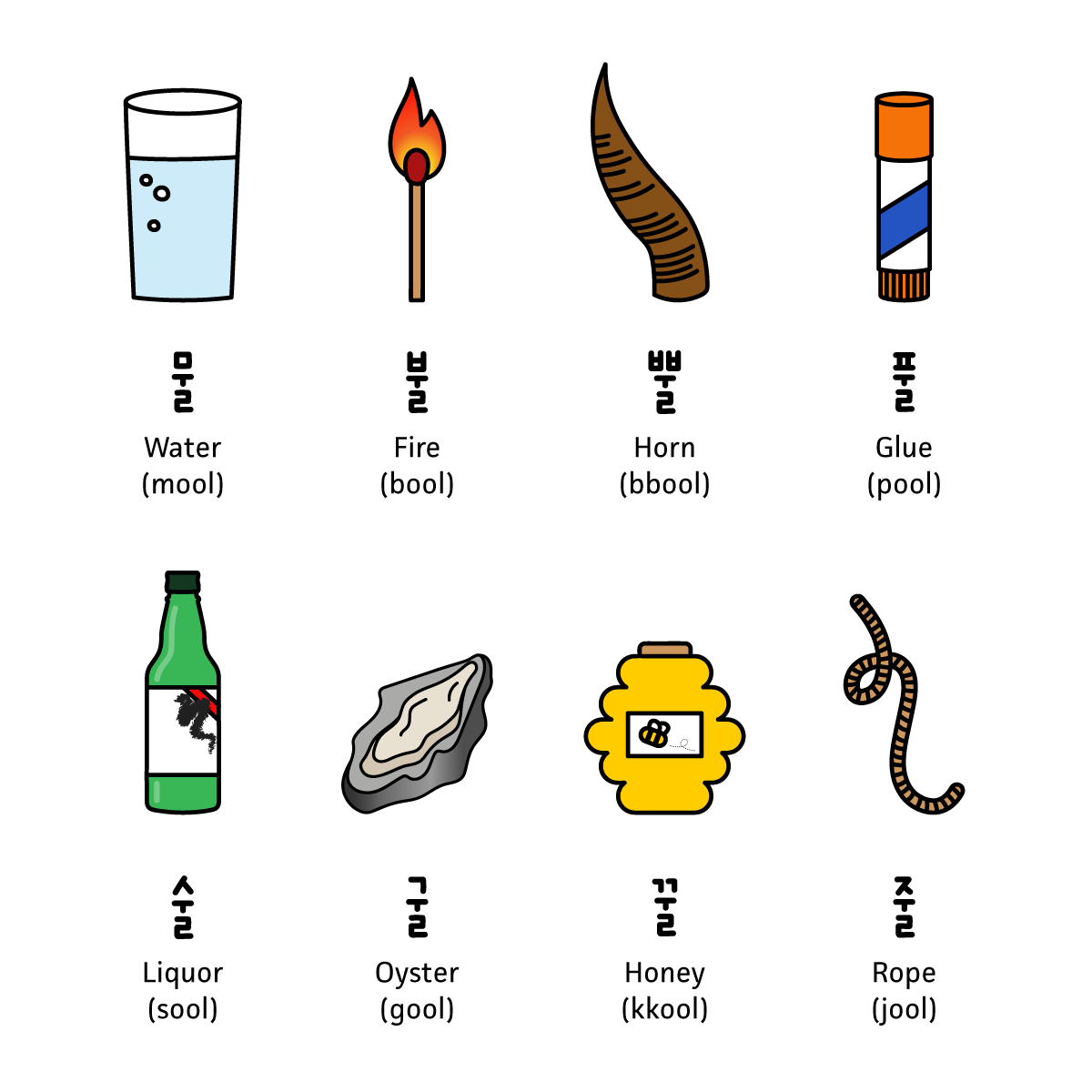
In My Korean Childhood Eunsan shares fun facts about the Korean language, like this one about Korean words with similar pronunciation.
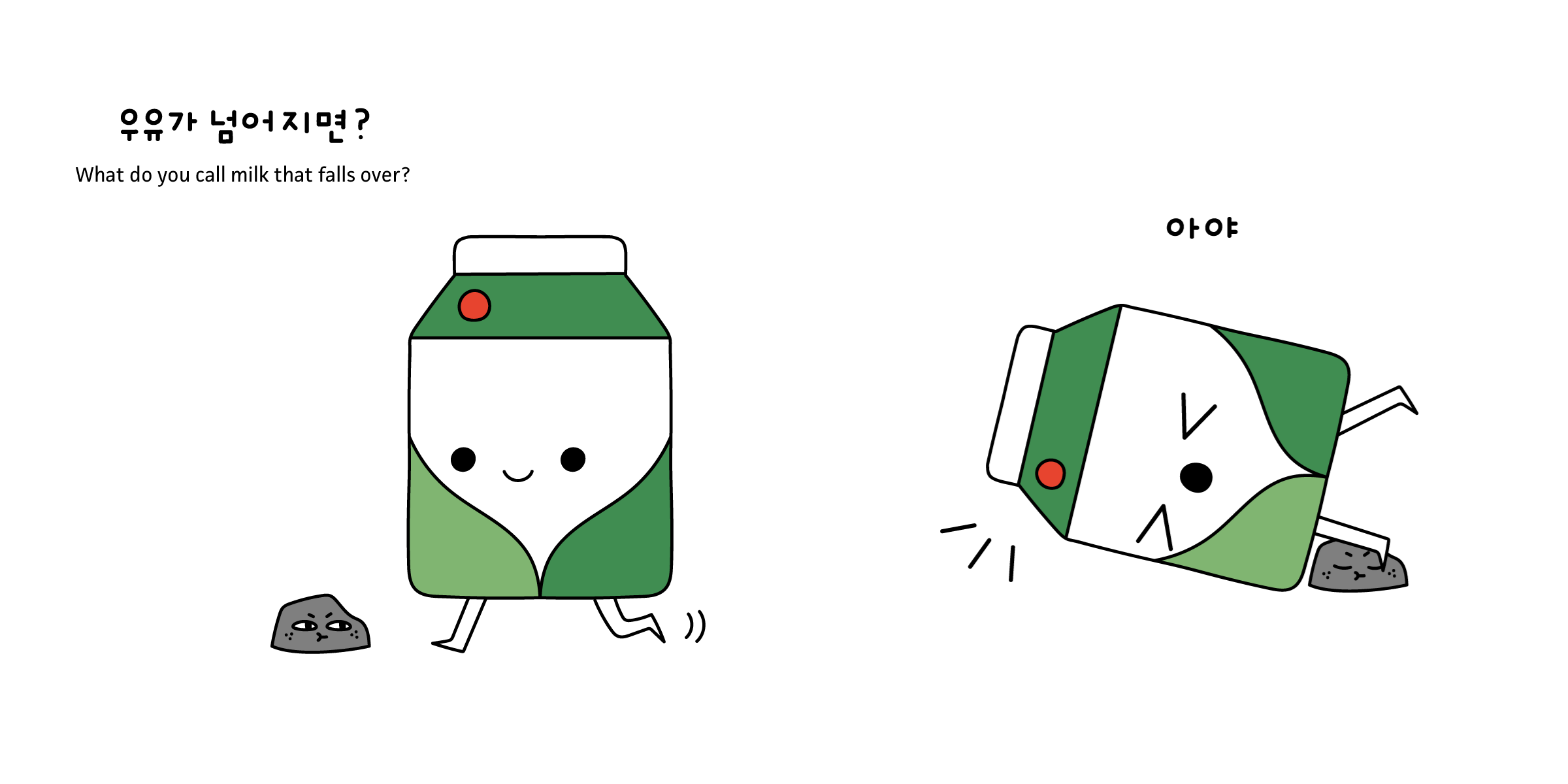
She also takes the opportunity to draw some Korean language-related jokes.
3. How many languages have you learned? Do you have any on the waiting list?
I speak English and Korean fluently, enough Dutch and French to get by, and a little Icelandic. I’ve also dabbled in learning Spanish and Japanese but it hasn’t stuck (though I know most of the sushi fish by their Japanese names now!). The thing about languages is that you lose it if you don’t use it! So it’s been hard to keep up with ones I don’t speak regularly in my day to day.
4. What are the language-related challenges you face living outside of Korea?
I don’t have any Korean friends that I speak Korean with, as most of them are Korean American and we’re all more comfortable with English. So I don’t get a lot of opportunities to speak it — basically just when I talk to my parents on the phone — and I miss it a lot. I used to go to a Korean speaking Meet Up but unfortunately that disbanded before the pandemic. Now I watch as many Korean movies and dramas as I can so I can at least hear some Korean!
It’s also hard to keep up with all the new slang words and acronyms that are always popping in Korea. I’m often Googling words I hear on the latest K dramas and variety shows.
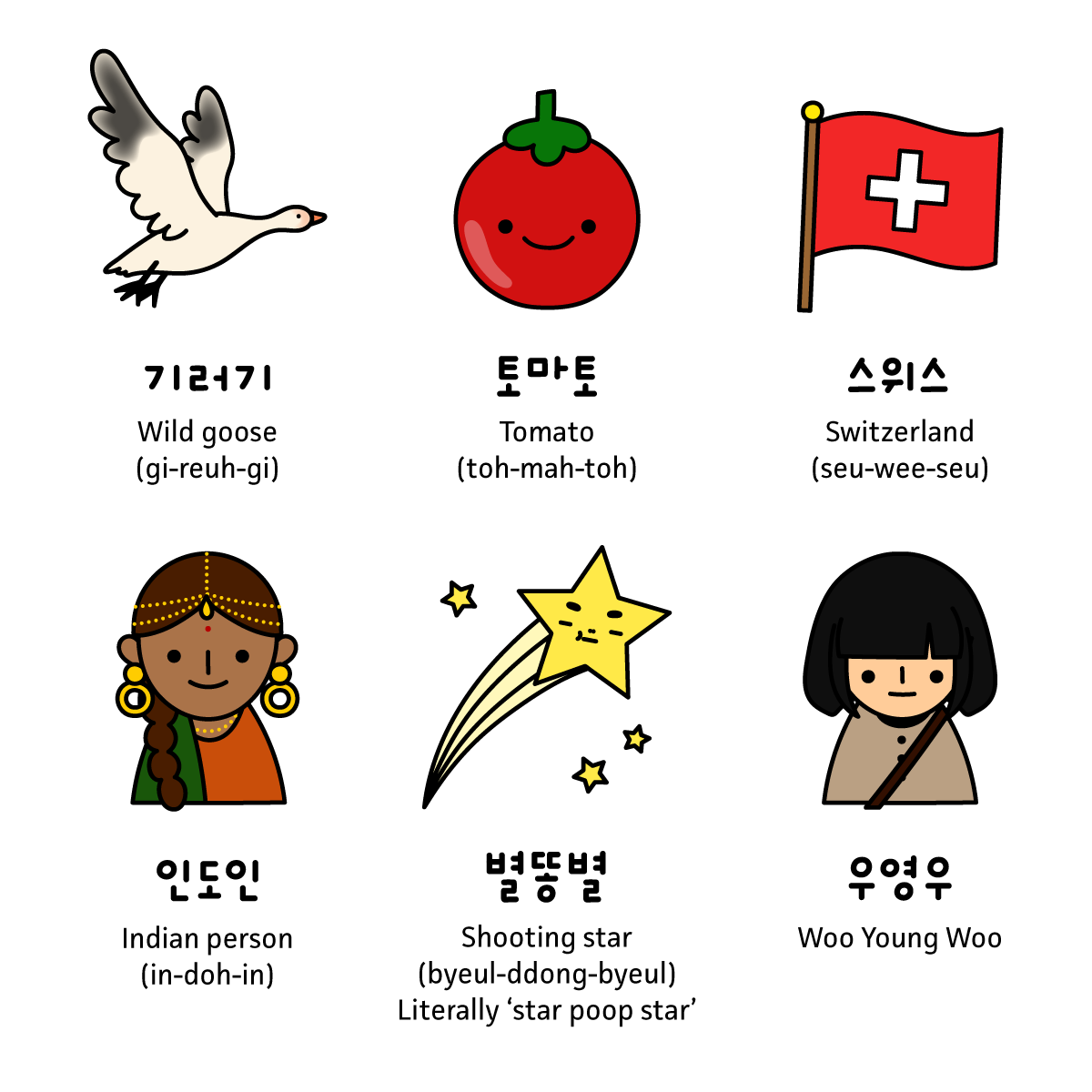
Inspired by the Korean drama Extraordinary Attorney Woo, Eunsan drew and shared some Korean palindromes. Palindromes are words that are the same forwards and backwards.
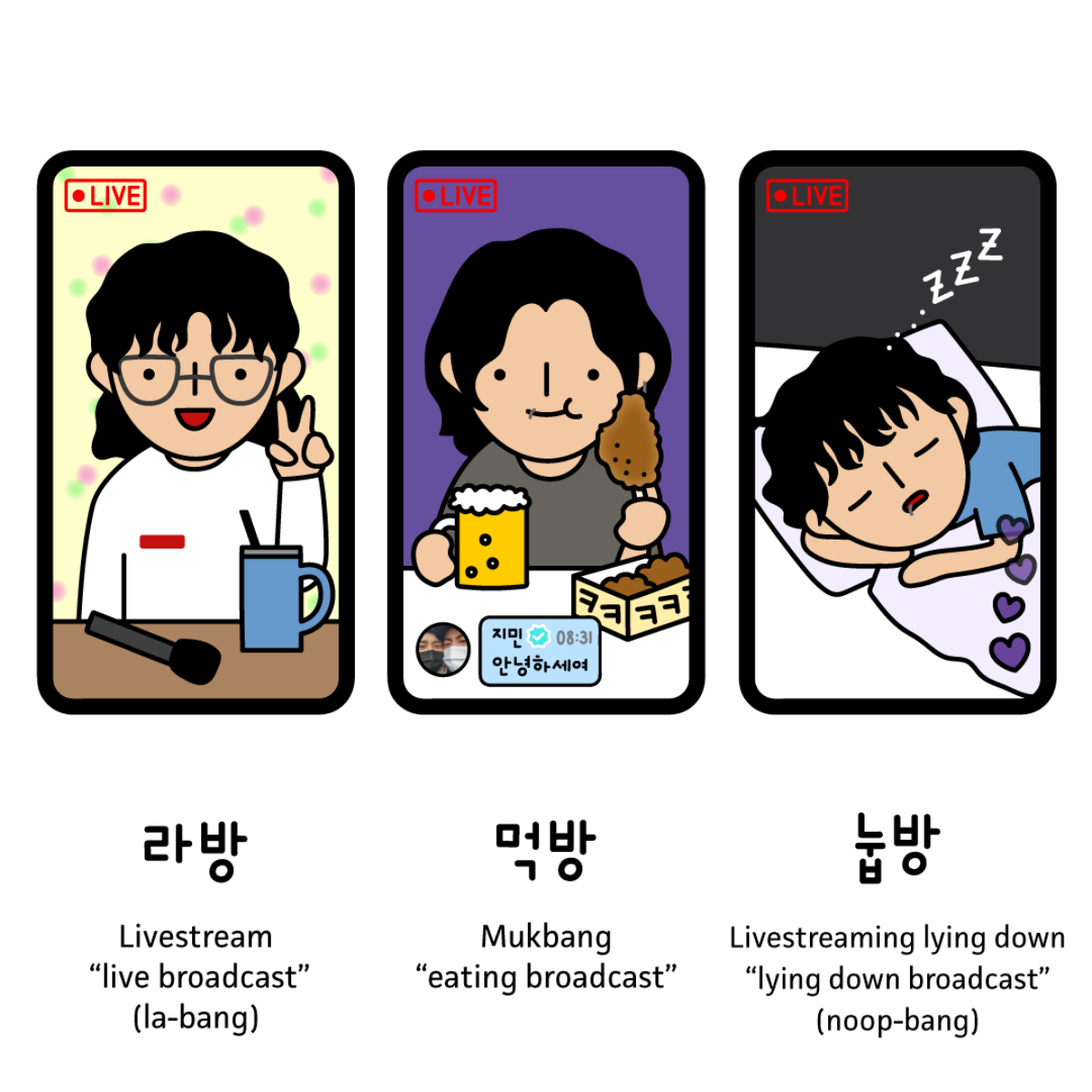
After hearing about how Jungkook fell asleep on his livestream she reflected on how she’s still learning new words like 눕방 (nubbang) which means lying down broadcast.
5. I saw that you work for Adobe (Behance specifically), Is that correct? What do you enjoy about your work?
My day job is doing marketing for Behance, which is a portfolio network for creatives. Before that I was a part of Adobe Stock, a microtock marketplace where artists can license their work. So in total, I’ve been with Adobe for 9 and a half years!
I’m not one of those creative people that can be in their own element and thrive. I need and enjoy structure, framework, and stability, which is what my job provides. I’m grateful that I’ve found my way to a company that’s set the standard for creative tools. Specifically on Behance, we are a product made for creatives by creatives so all of us have a lot of pride in what we’re building and so many of my coworkers are incredibly talented, pursuing their own creative interests outside of work.
6. You currently live in New York, a city that has many things to offer for creative people. What do you like the most about living in NY? (in addition to the variety of food, of course!).
I’ve only just started tapping into the Korean community here and something that I realized last year (after 16 years in New York) was what a vibrant community of talented, extremely motivated individuals I have in my network. Through Instagram I’ve been able to meet (virtually and IRL) other artists, writers, content creators, and entrepreneurs and I try to attend as many Korean community events as I can because I gain a lot of inspiration and motivation from meeting people who are passionate about what they’re creating.
7. You look for Korean food in every country you travel to. I read you have enjoyed Kimbap in Warsaw or Budaejjigae in Senegal. What do you think about the expansion of Korean food internationally?
It’s honestly unbelievable how widespread Korean food has become! It’s been such a treat to be able to try our food in all these different countries. It’s a testament to the interest that the global community has in Korea and our culture, and I feel so grateful for that curiosity and appreciation.
8. You are a very creative person and super skilled with your hands. You also have an account under the name of My Korean Crafts where you share your works in ceramics and embroidery. What are you up to now? What other crafts would you like to explore?
Because most of my work (personal illustration and my day job) are done on the screen, I enjoy having a more tactile outlet for creativity. The hardest challenge is just being consistent with these hobbies, something I’m still struggling with! I am quite greedy when it comes to learning more hobbies though, so I would like to learn quilting and stamp carving.
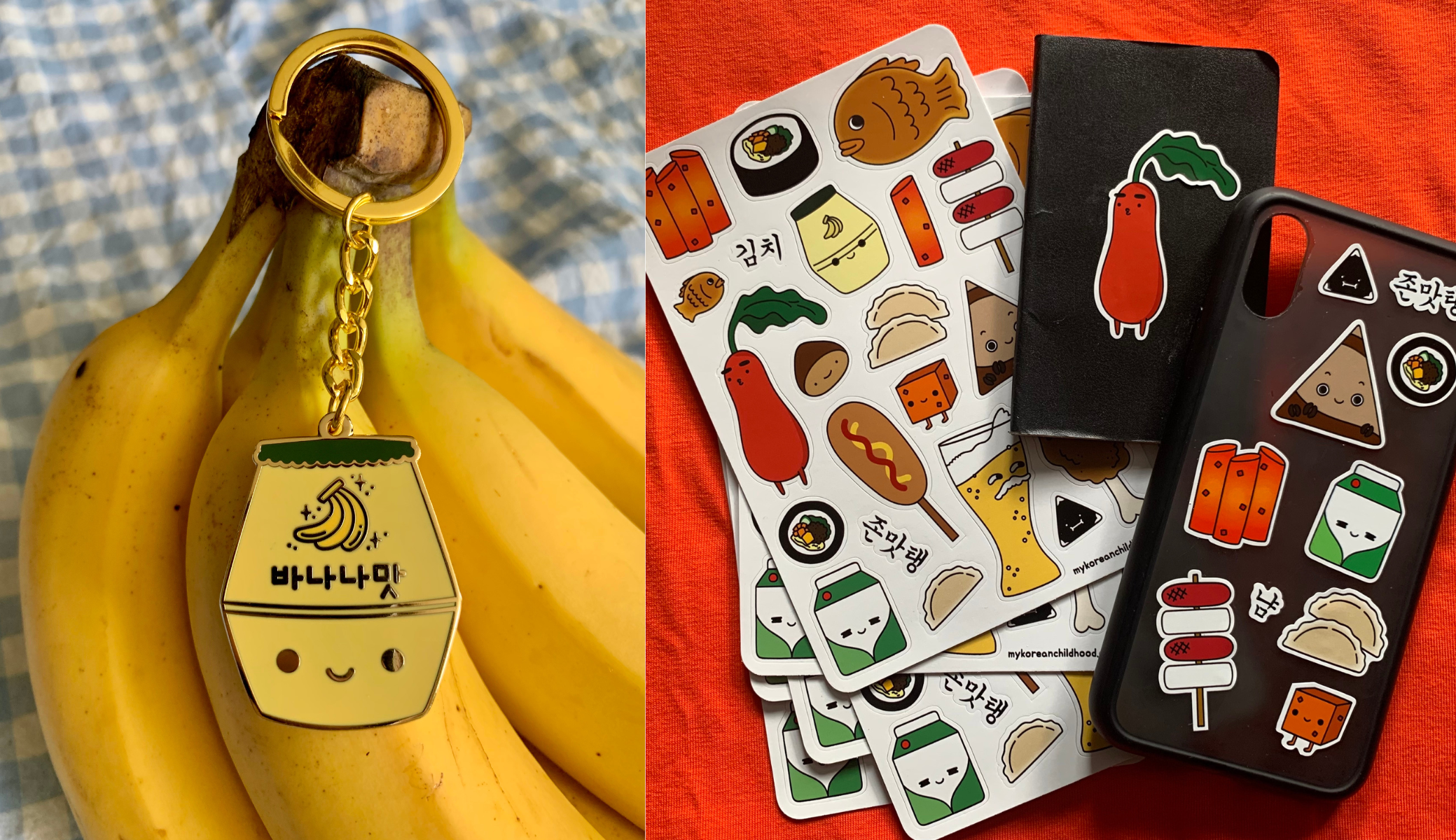
Banana milk keychains and Korean food-inspired stickers are some products that she sells at her Etsy shop.
9. You have collaborated on incredible projects with the Korean Cultural Center in New York (KCCNY) like the K-Culture Kit and K-Culture map. Are there any new projects for this year?
Nothing confirmed yet but I have a lot of ideas brewing! Since My Korean Childhood has been a fun personal project for me and not a financially motivated project, I haven’t done much outreach and only taken on projects that were inbound. This year one of my goals is to be more proactive and approach other creatives, organizations, and brands that I think are aligned with my goals of spreading love for all things Korean.
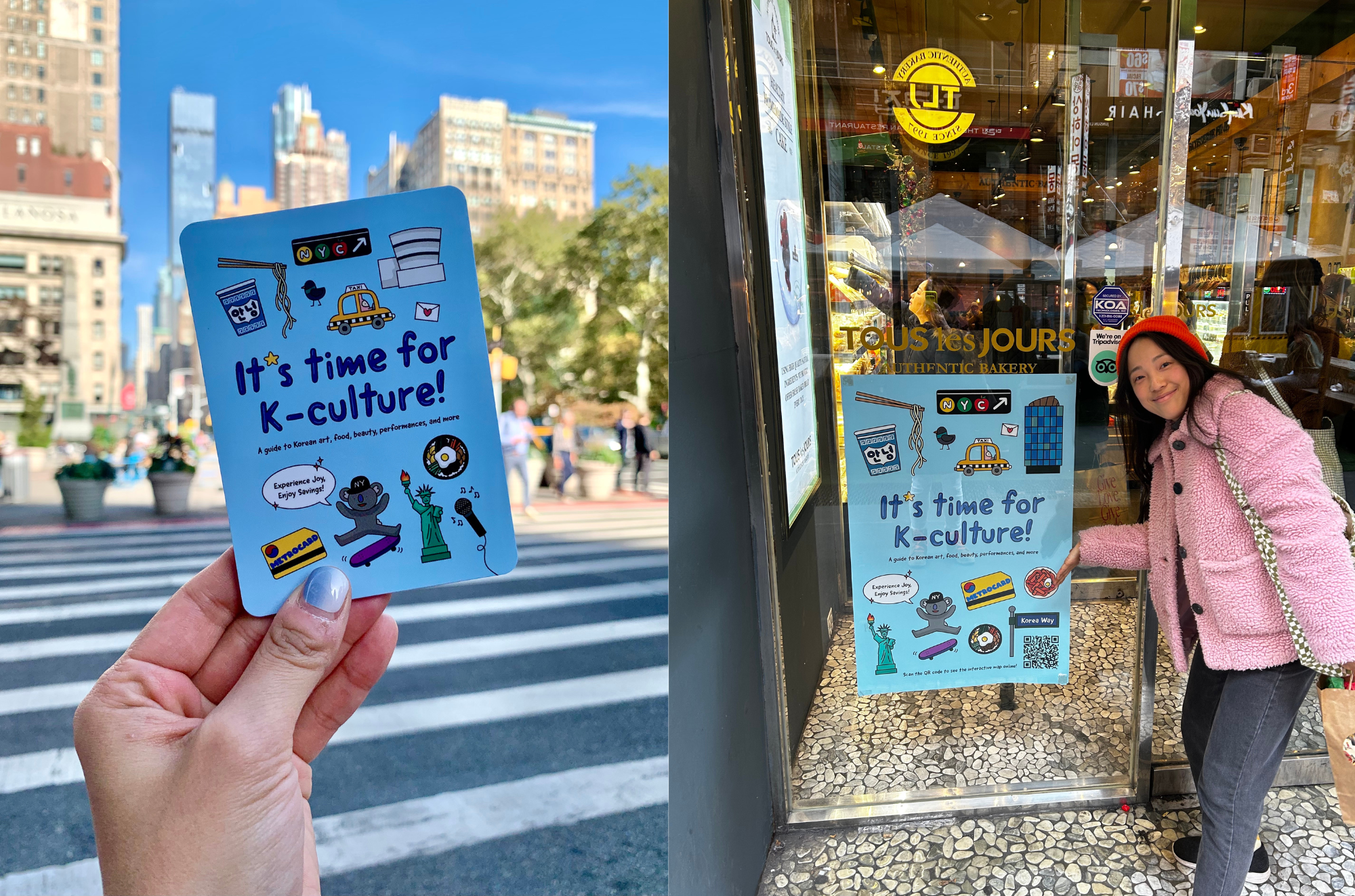
Last year, Eusan and the Korean Cultural Center New York joined forces to create an interactive guide to K-Lifestyle, including events related to K-Art, Performance, Food, Fashion, Beauty, Wellness, and Entertainment.
10. Recently, you reached 100K followers on My Korean Childhood account, congratulations! What does this achievement mean to you?
It’s so humbling to know so many people are interested in Korean culture and my illustrations! It motivates me to make more illustrations, of course, and also to be more thoughtful about what kind of content will be interesting and useful to those wonderful people who are looking at my work.
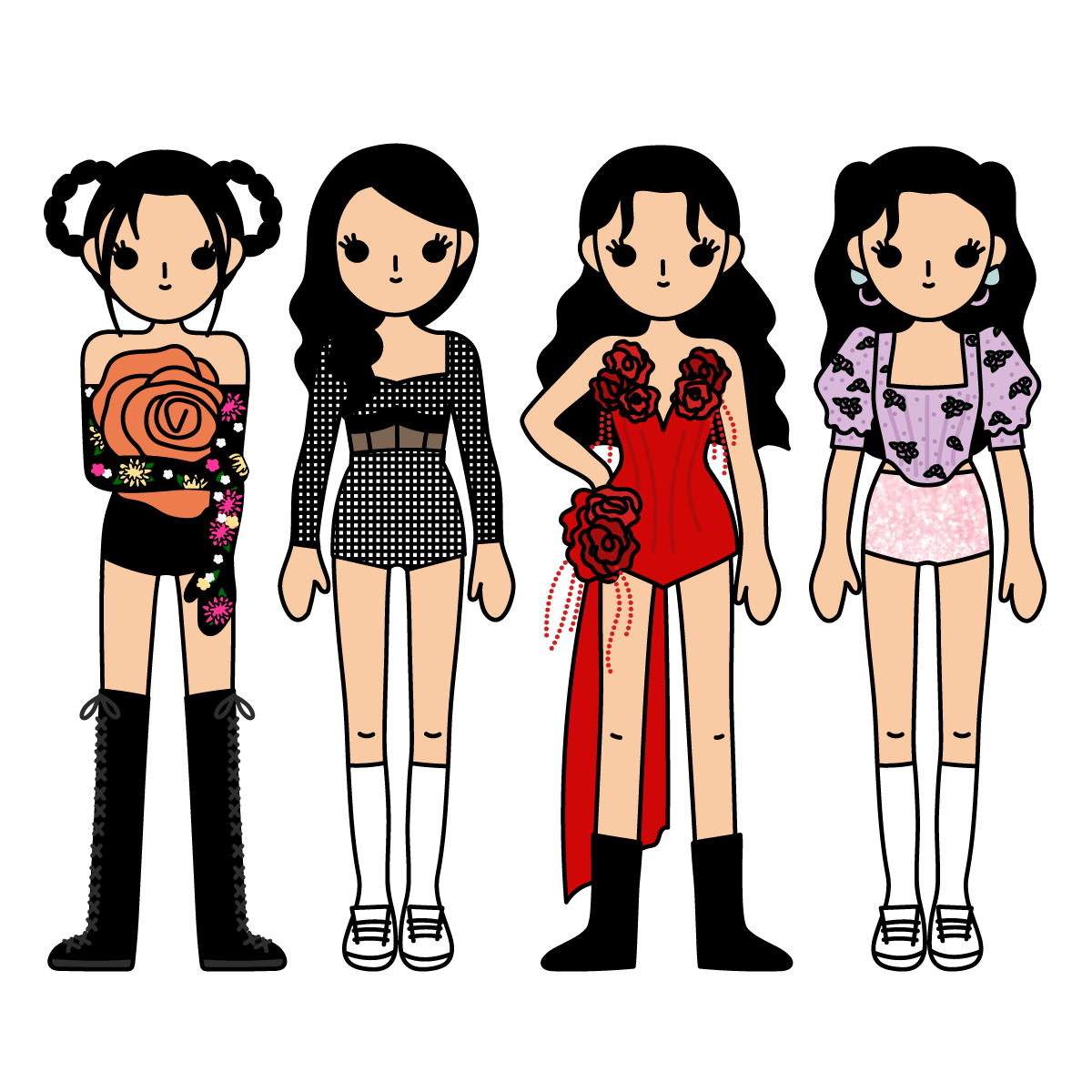
This illustration praises Blackpink member Jennie's great style through some of the outfits she has worn during their shows.
11. Finally, during a TED talk "Illustrating Language: Iceland in Icons" you mentioned that “when you learn a language you learn about a culture” Therefore I would like to ask you: Is there any significant experience that comes to your mind from the journey learning different languages or reconnecting with Korean?
One thing that I’ve learned is that every language is special in its own way and if you pay attention and have a curious mindset, you can find so many funny and interesting anomalies and idioms and stories. Even though I consider myself a fluent and native Korean speaker, the more I look into the language the more I find that I have to learn.
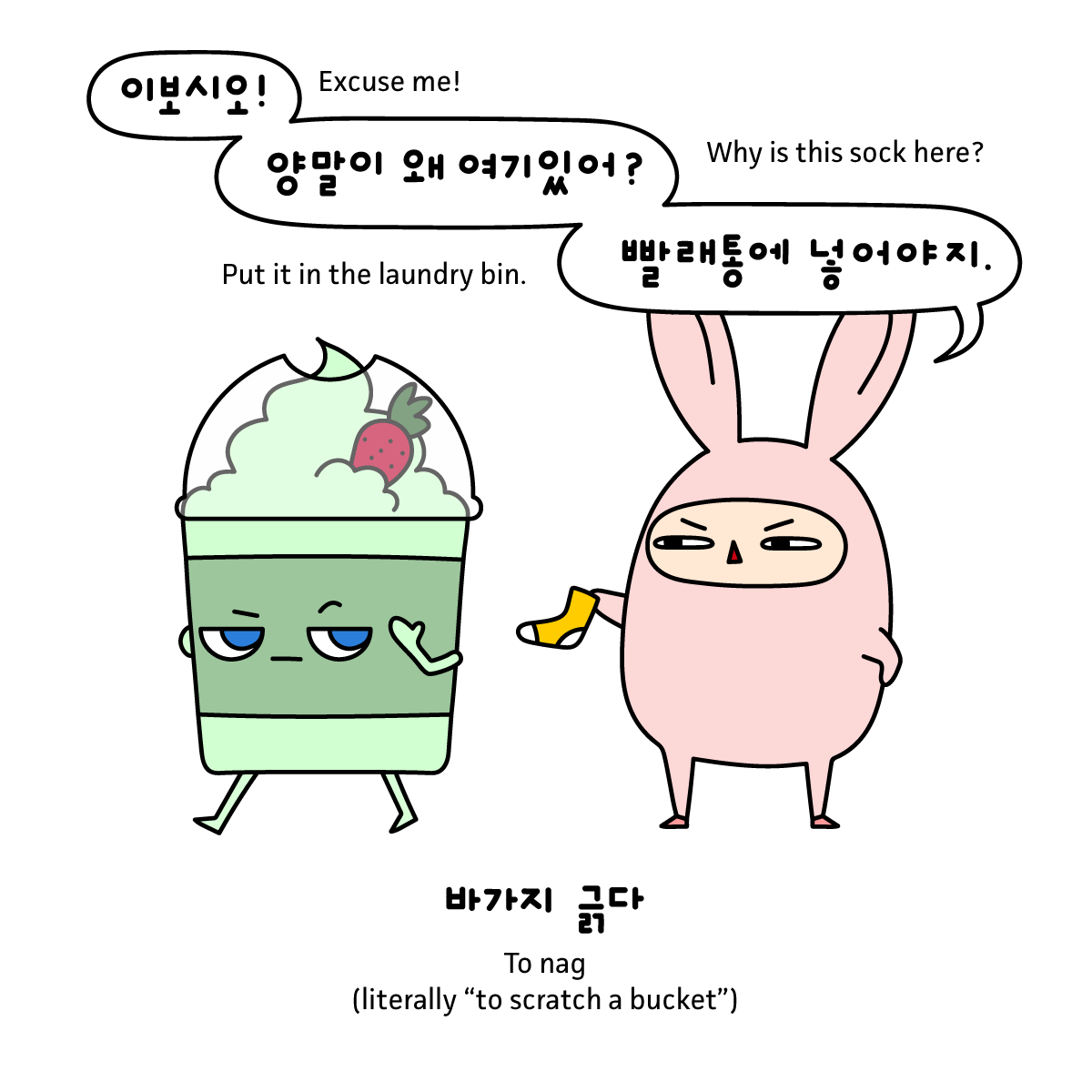
In this illustration Eunsan shares the expression (바가지 긁다 - bagaji geulgda) which means “To scratch a bucket” and is a Korean idiom for nagging. Apparently, it’s because the nagging sounds like the scratching sound and it’s not a particularly nice sound to hear.
If you want to know more about Eunsan and My Korean Childhood, you can visit her website and social networks:
Website: mykoreanchildhood.com
Instagram: @mykoreanchildhood
Behance: Eunsan Huh
How about this article?
- Like7
- Support0
- Amazing0
- Sad0
- Curious0
- Insightful0


